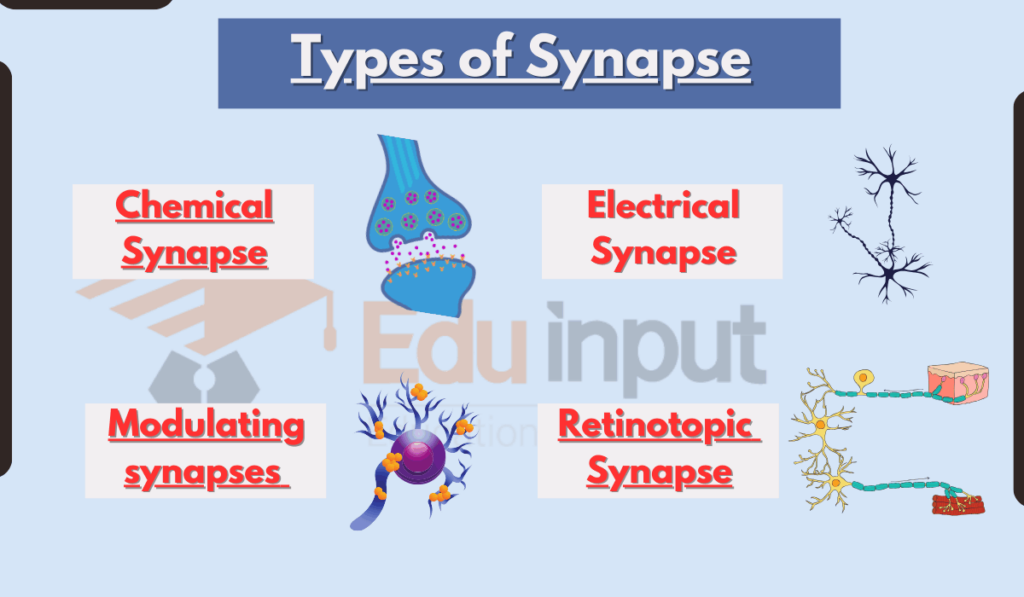5 Types of Synapse-An Overview
A synapse is the point of contact between two neurons. It is where the signal from one neuron is transmitted to another neuron. There are two main types of synapses: electrical synapses and chemical synapses based on the way they forward stimulus.

Also Learn When Transmission Occurs at a Synapse?
Types of Synapse
There are 5 types of synapses in neuron:
1. Chemical Synapses
Chemical synapses are the most common type of synapse in the nervous system. They are formed by the apposition of the presynaptic and postsynaptic membranes, with a small gap between them called the synaptic cleft.
The presynaptic neuron releases neurotransmitters into the synaptic cleft, which bind to receptors on the postsynaptic neuron. This binding opens ion channels, which allows ions to flow across the membrane and create a postsynaptic potential.
The postsynaptic potential can be either excitatory or inhibitory, depending on the type of neurotransmitter and receptor involved.
2. Electrical Synapses
Electrical synapses are less common than chemical synapses, but they are found in many important brain areas, such as the cerebellum and hippocampus.
They are formed by the direct connection of the presynaptic and postsynaptic membranes through gap junctions. These gap junctions are made up of proteins called connexins, which form channels that allow ions to flow freely between the two cells.
This means that the electrical signal from the presynaptic neuron is transmitted directly to the postsynaptic neuron, without the need for neurotransmitters.
In addition to chemical and electrical synapses, there are a few other types of synapses that have been described. These include:
3. Modulating synapses
Modulating synapses are synapses that can influence the strength of transmission at other synapses. For example, modulating synapses can make a chemical synapse more or less excitatory.
4. Mixed synapses
Mixed synapses are synapses that have both chemical and electrical components. These synapses are thought to be important for coordinating the activity of different neurons.
5. Retinotopic synapses
Retinotopic synapses are synapses that are arranged in a precise spatial pattern. This allows the brain to represent visual information accurately.
Also learn about:

 written by
written by 



Leave a Reply